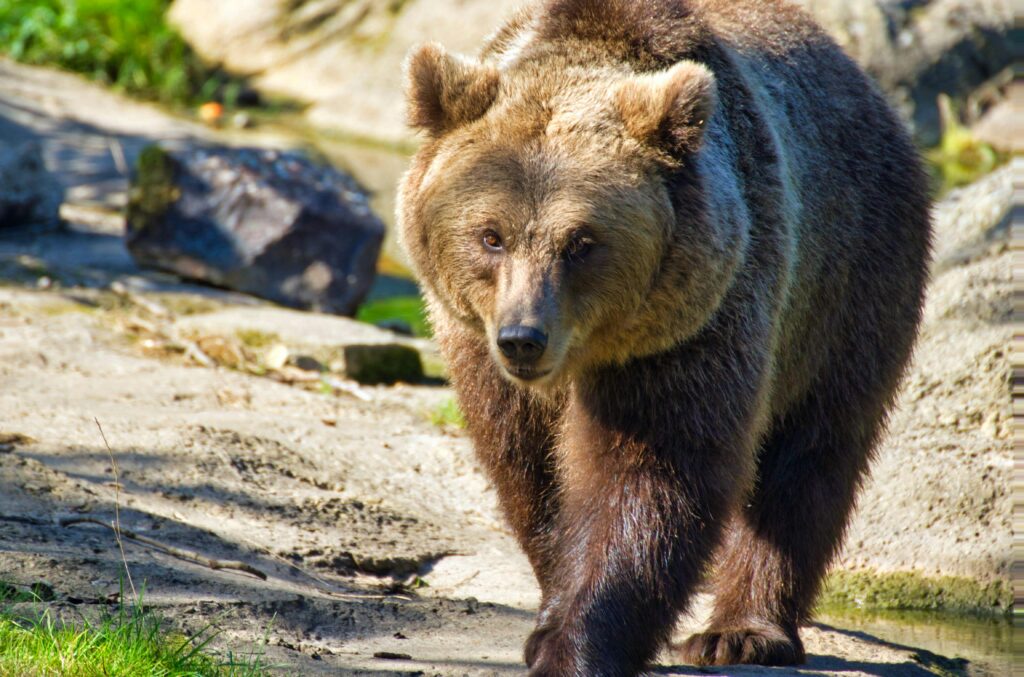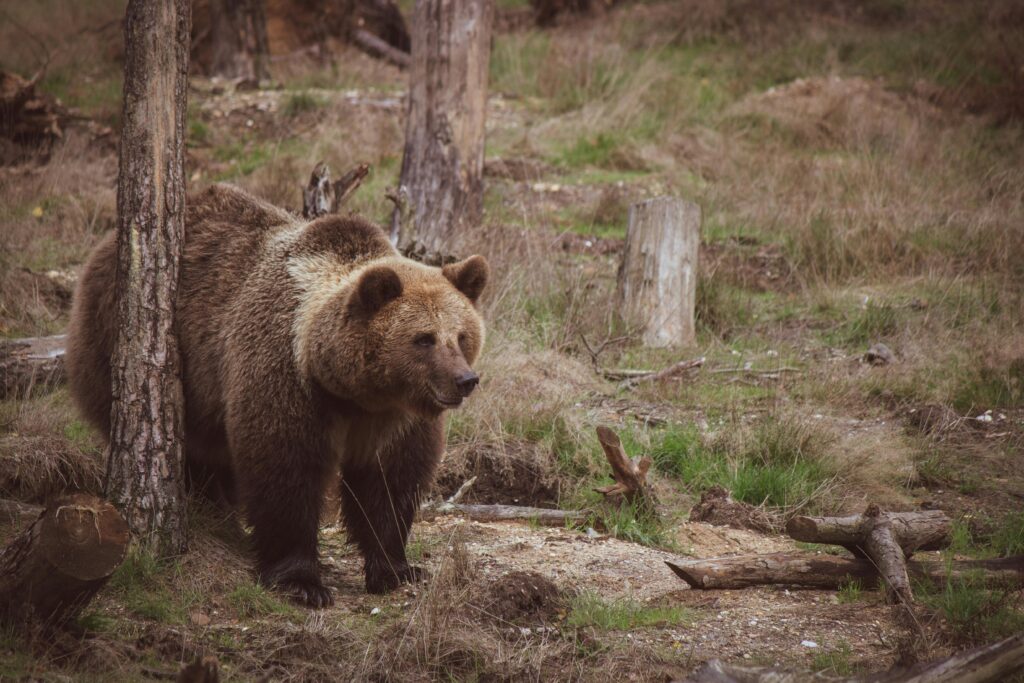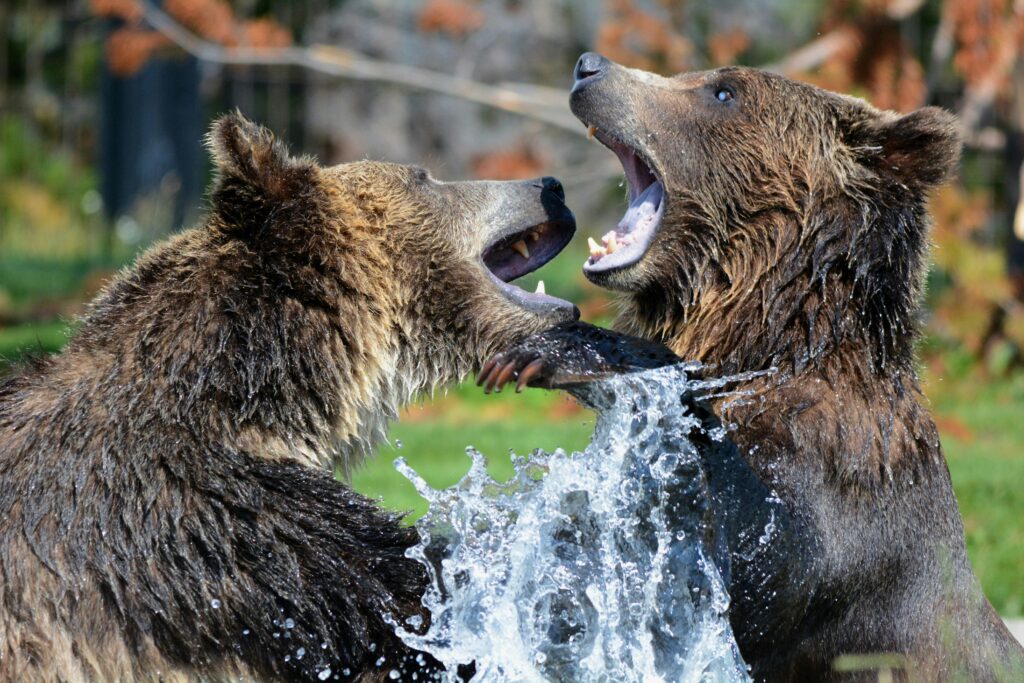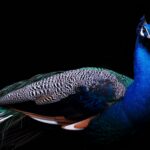The brown bear (Ursus arctos) is a widely distributed species, renowned for its power, intelligence, and adaptability. Among the most famous of its subspecies is the Kodiak bear (Ursus arctos middendorffi), which resides exclusively in Alaska’s Kodiak Archipelago. Due to their isolated environment, Kodiak bears have developed distinct characteristics that set them apart from other brown bears, especially the grizzly bear (Ursus arctos horribilis) found in North America’s interior regions. This article provides an in-depth exploration of the Kodiak and brown bears, including their physical characteristics, diet, behavior, and conservation efforts aimed at preserving these awe-inspiring animals.
An Overview of the Brown Bear
Brown bears are among the most iconic mammals and have one of the broadest ranges of any bear species. Their adaptability has allowed them to thrive across diverse landscapes, from the forested wilderness of North America to the mountainous regions of Europe and Asia. The species includes several subspecies, each adapted to its unique habitat. For example, the Eurasian brown bear (Ursus arctos arctos) inhabits Europe and Asia, while the grizzly bear is native to North America. Despite their differences, these subspecies share common physical and behavioral traits that define them as brown bears.
The Kodiak Bear: The Largest of the Brown Bears

The Kodiak bear, one of the most isolated brown bear subspecies, is exclusive to the Kodiak Archipelago, a group of islands off Alaska’s southern coast. The unique environment of these islands has allowed the Kodiak bear population to grow in isolation, leading to notable distinctions from other brown bears.
Physical Characteristics of the Kodiak Bear
Kodiak bears are often regarded as some of the largest terrestrial carnivores on Earth, with adult males typically weighing between 1,000 to 1,500 pounds (450 to 680 kg) and standing up to 10 feet (3 meters) tall when on their hind legs. Exceptional males can reach weights of up to 1,800 pounds (820 kg) in peak condition. Female Kodiak bears are smaller, averaging 400 to 700 pounds (180 to 320 kg), but are still among the largest female bears in the world.
The massive size of the Kodiak bear is partially due to the abundance of high-calorie food sources, especially salmon, which are rich in proteins and fats essential for muscle development. Kodiak bears have thick fur that ranges from golden-brown to dark brown, offering excellent insulation against the archipelago’s cool, damp climate.
Diet and Feeding Patterns of Kodiak Bears
Kodiak bears are omnivorous, meaning they consume a diverse array of foods, including fish, vegetation, and occasionally other mammals. Their diet varies seasonally; in spring, they consume young grasses and sedges to replenish the nutrients lost during hibernation. In summer and early autumn, when salmon are plentiful, Kodiak bears rely heavily on these nutrient-rich fish to build up fat reserves for the winter. They also consume berries, roots, and occasionally small mammals to supplement their diet.
The Kodiak bear’s annual feeding cycle is closely tied to the salmon spawning season, which allows these bears to consume the nutrients they need in a relatively short time frame. This dietary abundance is a primary reason for the Kodiak bear’s impressive size and health.
Behavior and Social Structure of Kodiak Bears
Kodiak bears are generally solitary animals, but they tolerate each other more than many other bear subspecies. This tolerance is partly due to the concentrated food resources in the region. During the salmon runs, Kodiak bears may gather in larger numbers near rivers, creating social dynamics that allow biologists to observe their behavior in a unique setting. Hierarchies often form in these gatherings, with larger, older bears asserting dominance over younger bears. However, fights are rare due to the plentiful food supply.
Kodiak bears enter hibernation in late October or early November, depending on their accumulated fat reserves and environmental factors. Hibernation typically lasts five to eight months, during which time bears rely on their fat stores for survival.
The Brown Bear: A Diverse and Adaptable Species

Unlike the Kodiak bear, the brown bear species has a widespread range that covers three continents, demonstrating the species’ remarkable adaptability. Brown bears inhabit a range of environments, from the tundra and mountains of Eurasia to the forests and meadows of North America. They vary significantly in size, behavior, and dietary habits based on their geographic location and available resources.
Physical Characteristics of Brown Bears
Brown bear size is highly variable. Coastal brown bears, especially those along Alaska’s coast, can rival the Kodiak bear in size due to their similar access to high-protein food sources like salmon. In contrast, inland brown bears, such as the grizzly bear, tend to be smaller. Male grizzly bears typically weigh 400 to 800 pounds (180 to 360 kg), while females weigh around 290 to 440 pounds (130 to 200 kg).
Brown bears have dense fur that varies from light to dark brown, often with a distinctive shoulder hump, which is a mass of muscle used for digging and other physical tasks. This hump is particularly pronounced in grizzlies, allowing them to dig for roots and burrowing animals more effectively.
Diet and Feeding Patterns of Brown Bears
Like Kodiak bears, brown bears are omnivores and exhibit opportunistic feeding behaviors. Coastal brown bears enjoy abundant fish resources, while inland brown bears rely more heavily on vegetation, roots, berries, and occasionally larger animals such as deer or moose. Their diet is highly adaptable, which allows brown bears to thrive in diverse habitats.
Behavior and Social Structure of Brown Bears
Brown bears are solitary and territorial, especially grizzlies, which are known for their aggressive tendencies compared to Kodiak bears. Brown bears also enter hibernation for several months, relying on their fat reserves to sustain them through the winter months.
Key Differences Between Kodiak Bears and Other Brown Bears
The primary differences between Kodiak bears and other brown bears lie in size, geographic range, social behaviors, and dietary patterns:
- Size: Kodiak bears are among the largest brown bears due to their nutrient-rich environment, while inland brown bears, such as the grizzly, tend to be smaller.
- Range: Kodiak bears are limited to Alaska’s Kodiak Archipelago, whereas brown bears have a much broader distribution across North America, Europe, and Asia.
- Behavior: While all brown bears are solitary, Kodiak bears exhibit more tolerance for each other due to the high concentration of food resources. Grizzlies and other inland brown bears are more territorial and aggressive.
Conservation Status and Efforts
Kodiak and brown bears face distinct conservation challenges. Human encroachment, habitat fragmentation, and climate change have impacted brown bear populations in many areas, leading to conflicts with humans. However, conservation initiatives have made strides in protecting these bears and their habitats. For instance, the Kodiak National Wildlife Refuge covers two-thirds of the Kodiak Archipelago, providing a sanctuary where Kodiak bears can thrive without significant human interference.
In North America, strict hunting regulations and protected areas help maintain healthy brown bear populations. Similar conservation efforts are in place in Europe and Asia, with varying levels of success. Habitat corridors, research initiatives, and public education on reducing bear-human conflicts are essential components of these conservation strategies.
Conclusion
The Kodiak bear and other brown bear subspecies embody the strength, intelligence, and adaptability of the Ursidae family. Kodiak bears, with their isolated range and impressive size, are a testament to how specific environments shape species. Brown bears, in contrast, exemplify adaptability and resilience, thriving in a range of climates and landscapes.
Protecting these majestic creatures requires an understanding of their behaviors, habitats, and the challenges they face. Conservation efforts remain crucial to ensuring future generations can witness the awe-inspiring power and beauty of both Kodiak and brown bears in the wild. By balancing human activity with wildlife preservation, we can secure a place for these iconic animals in our world’s natural heritage.



